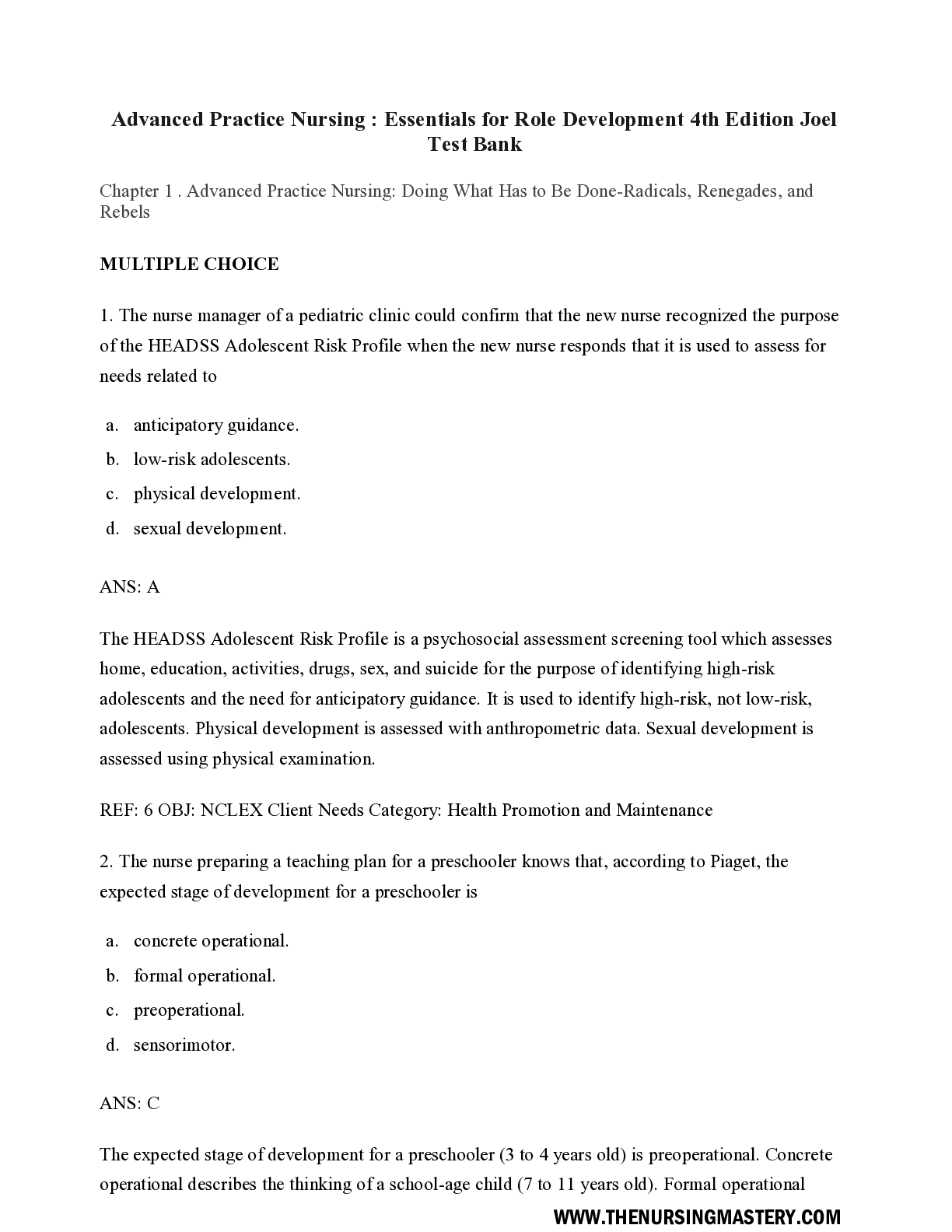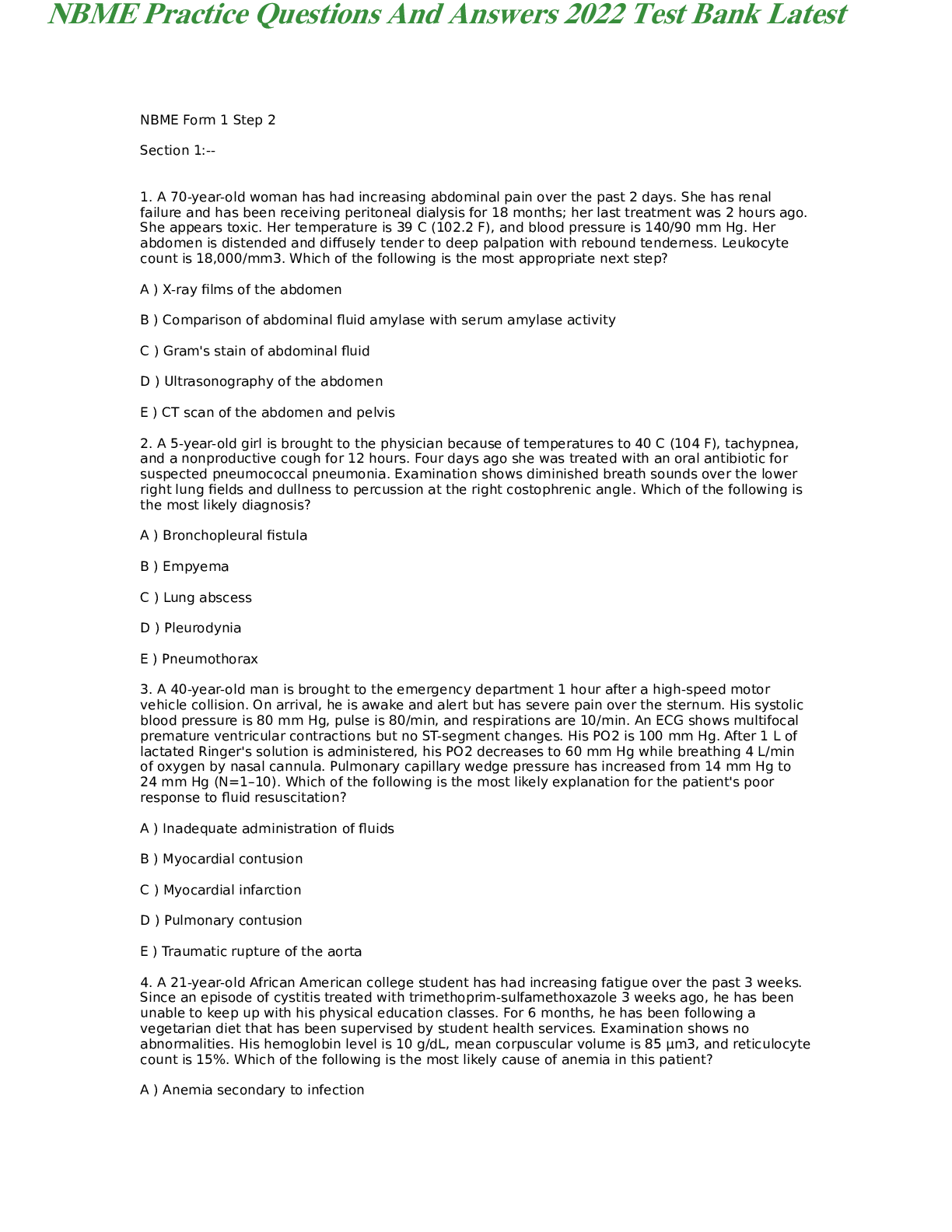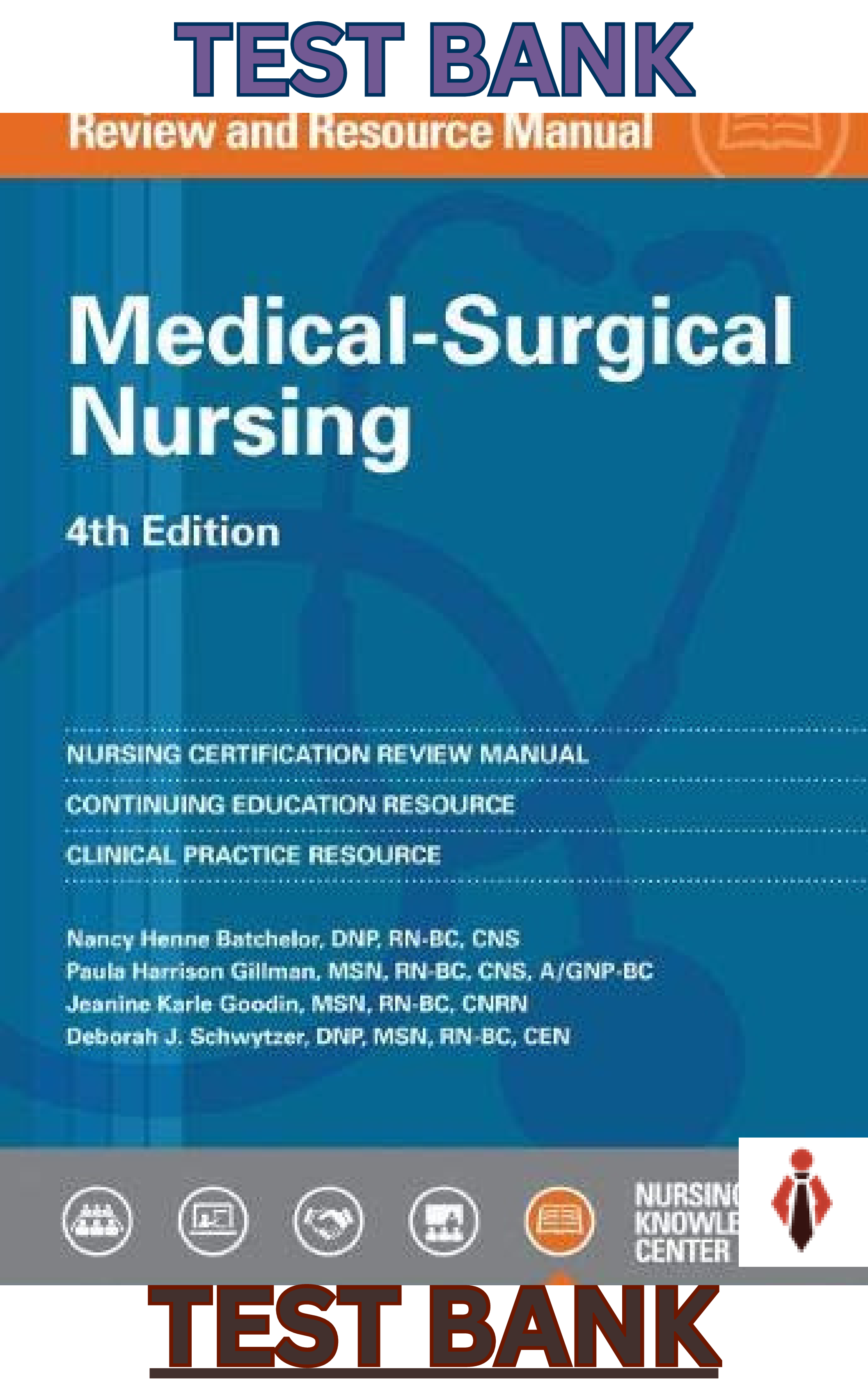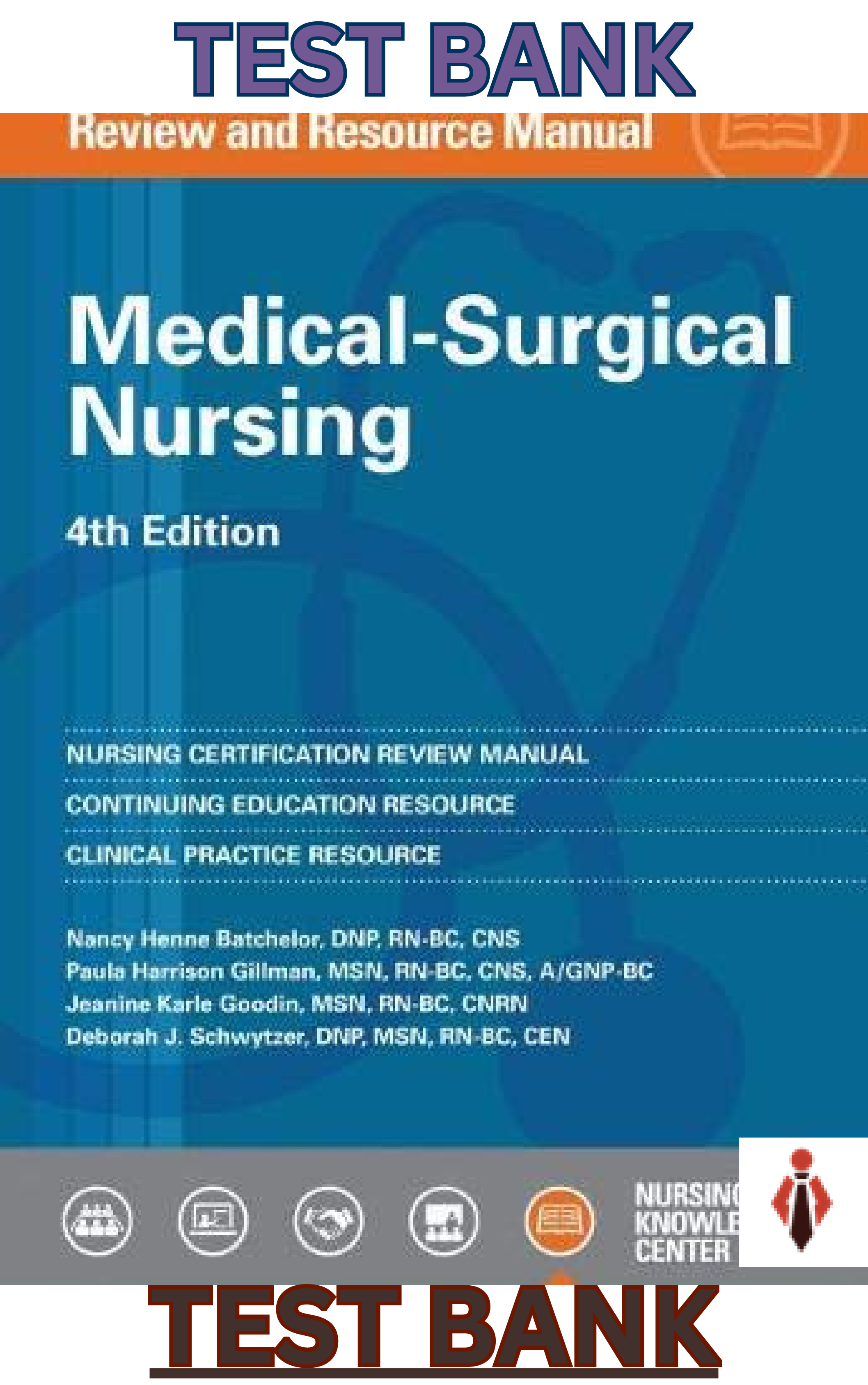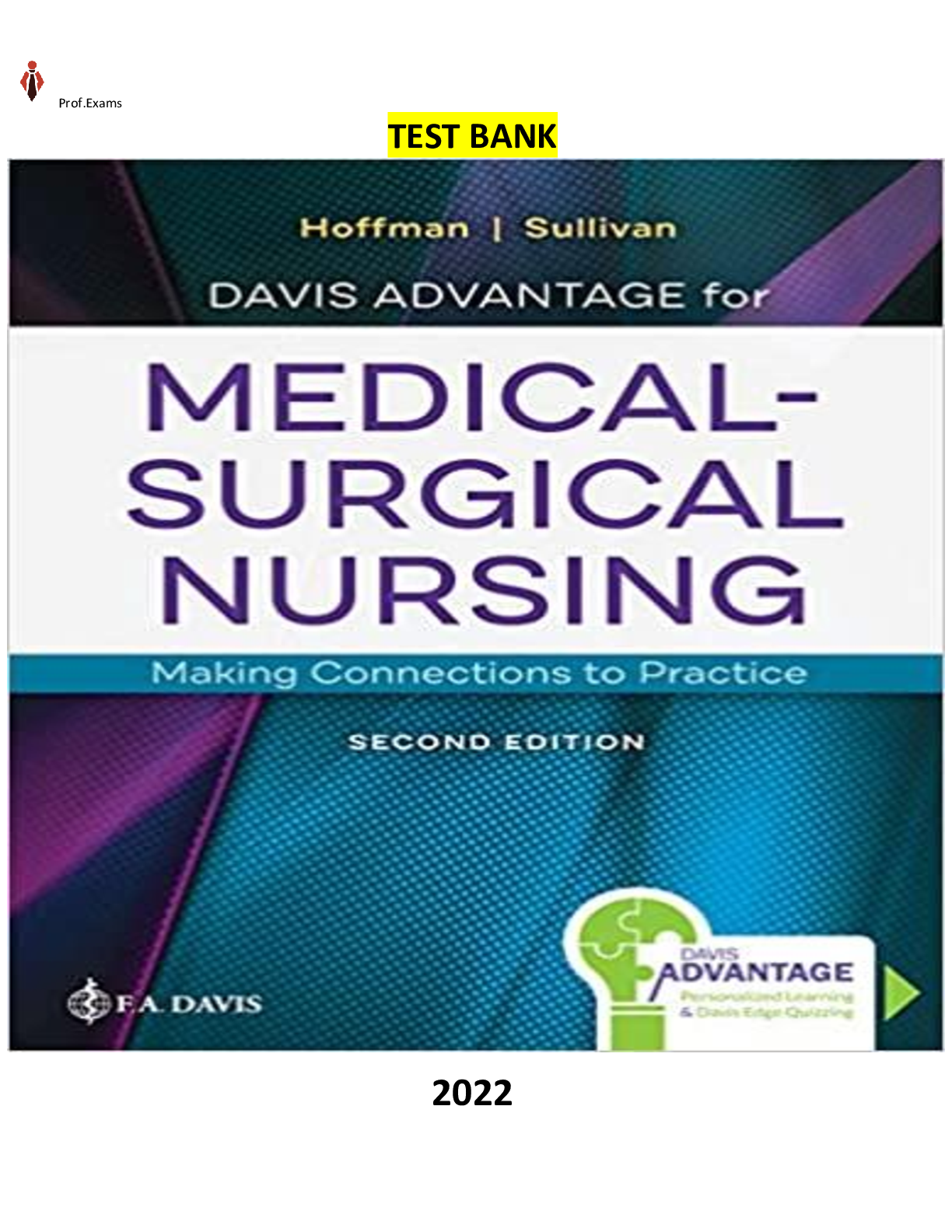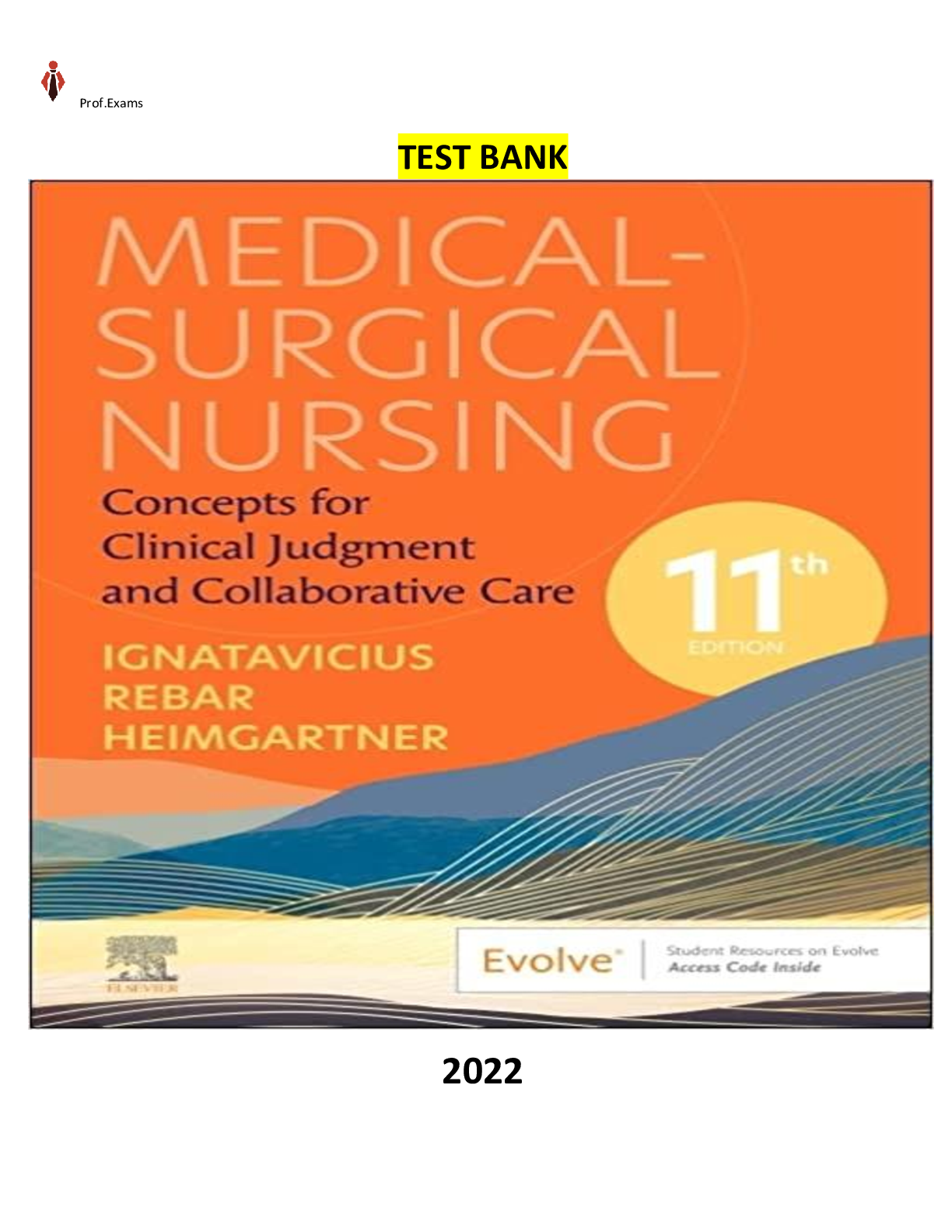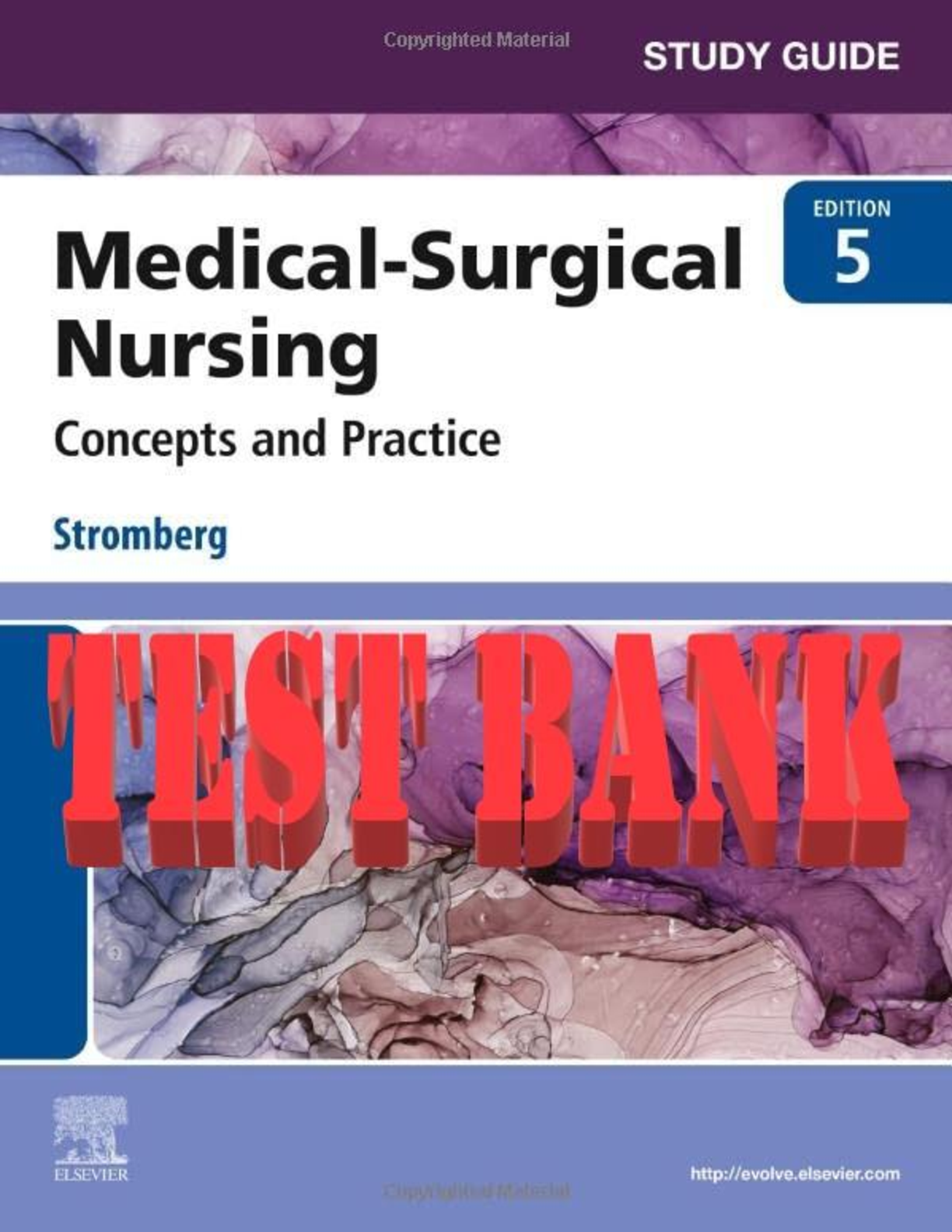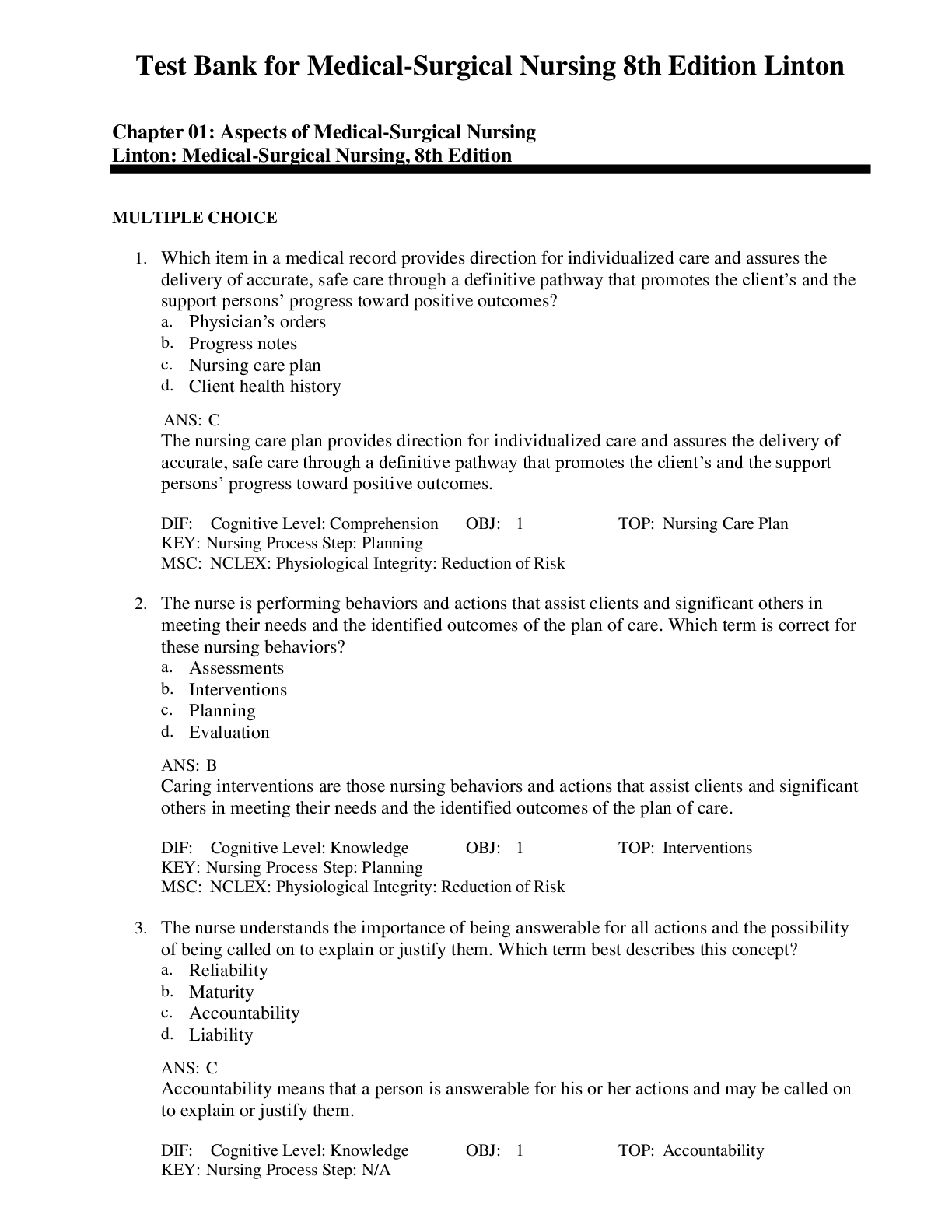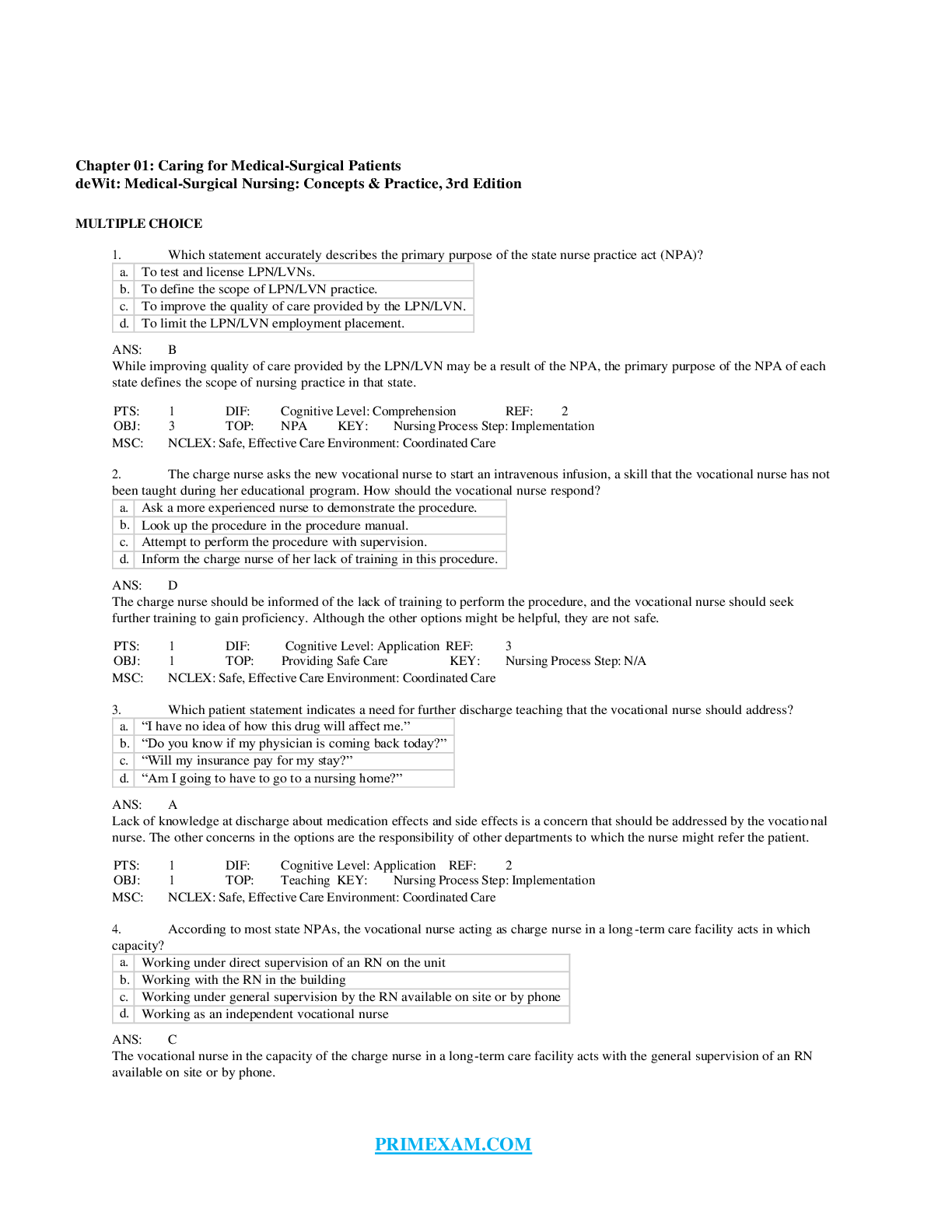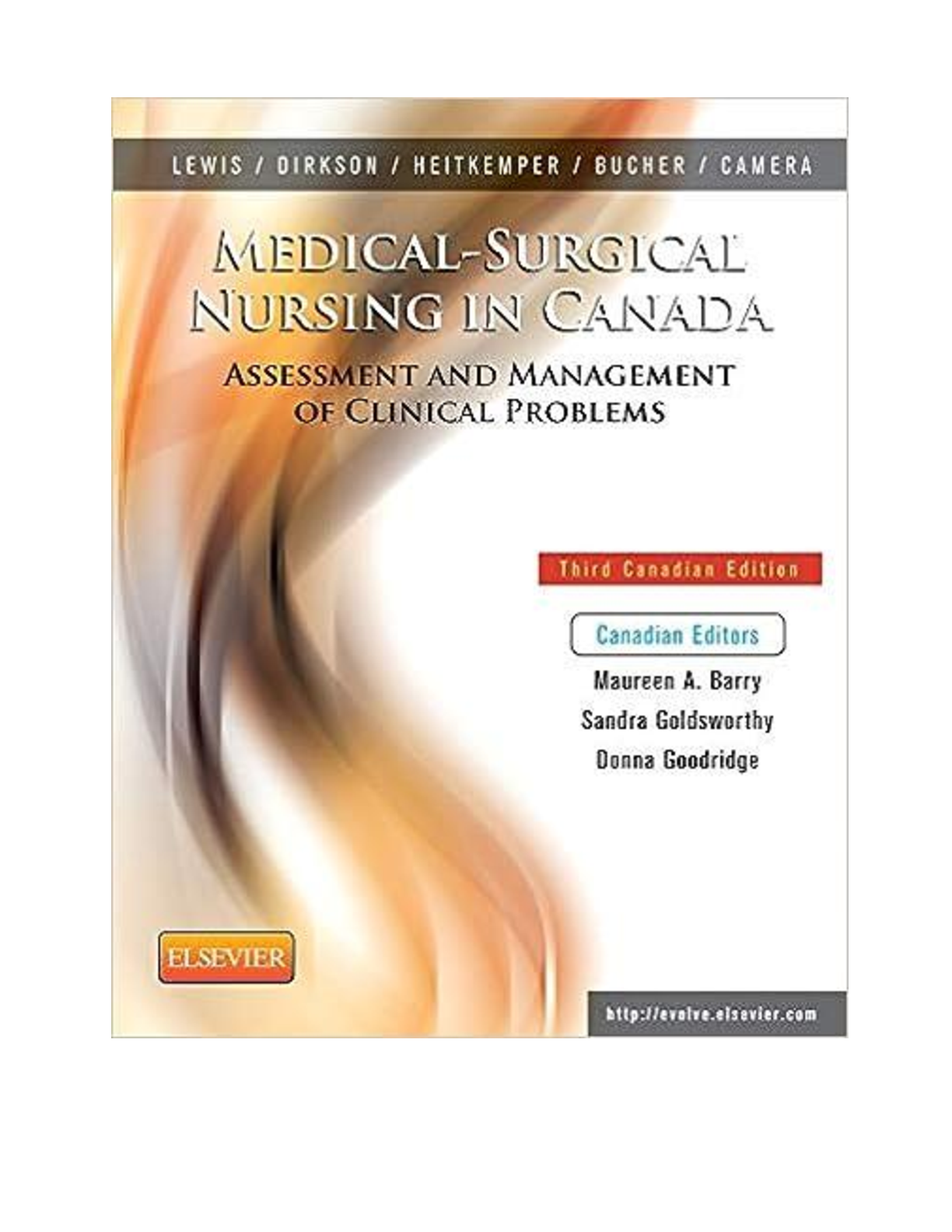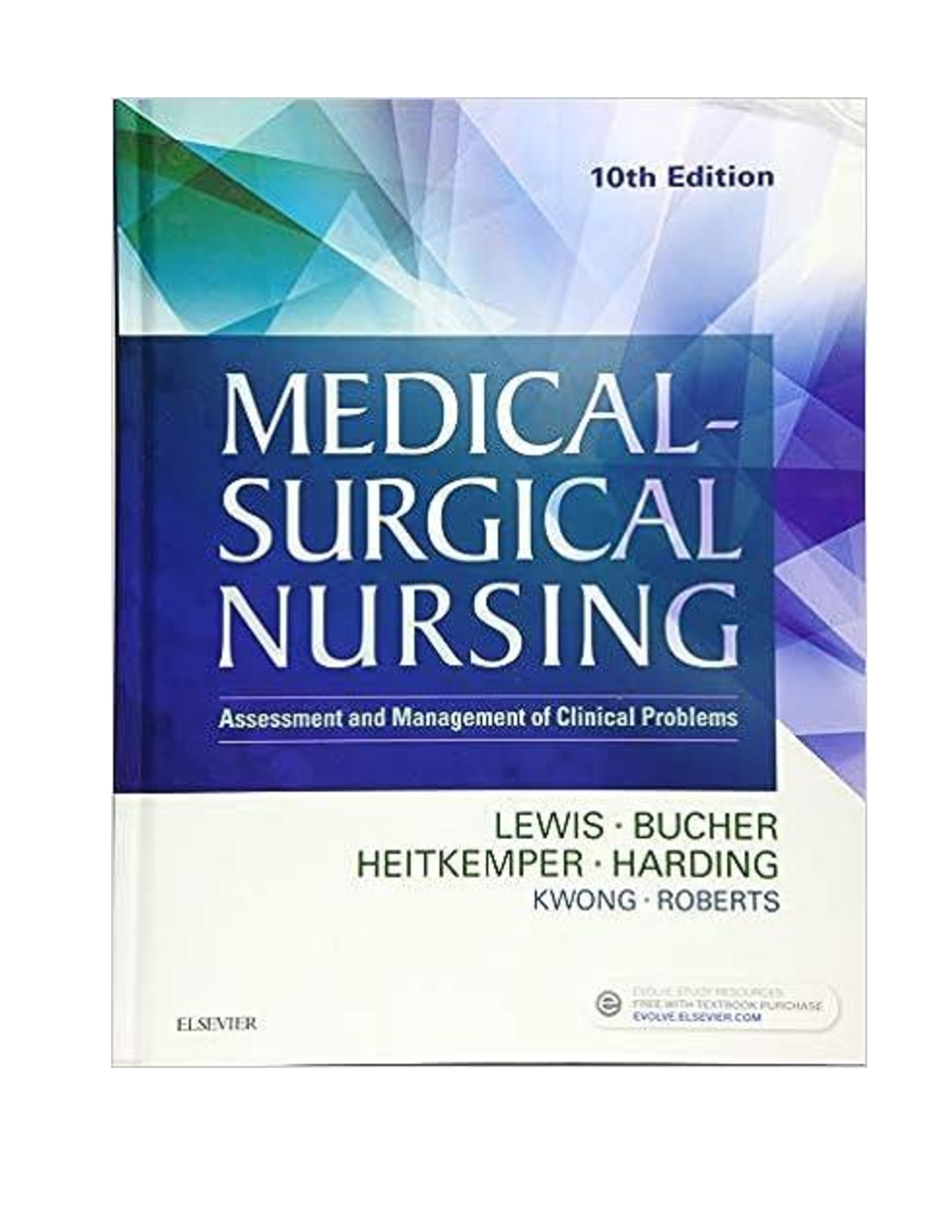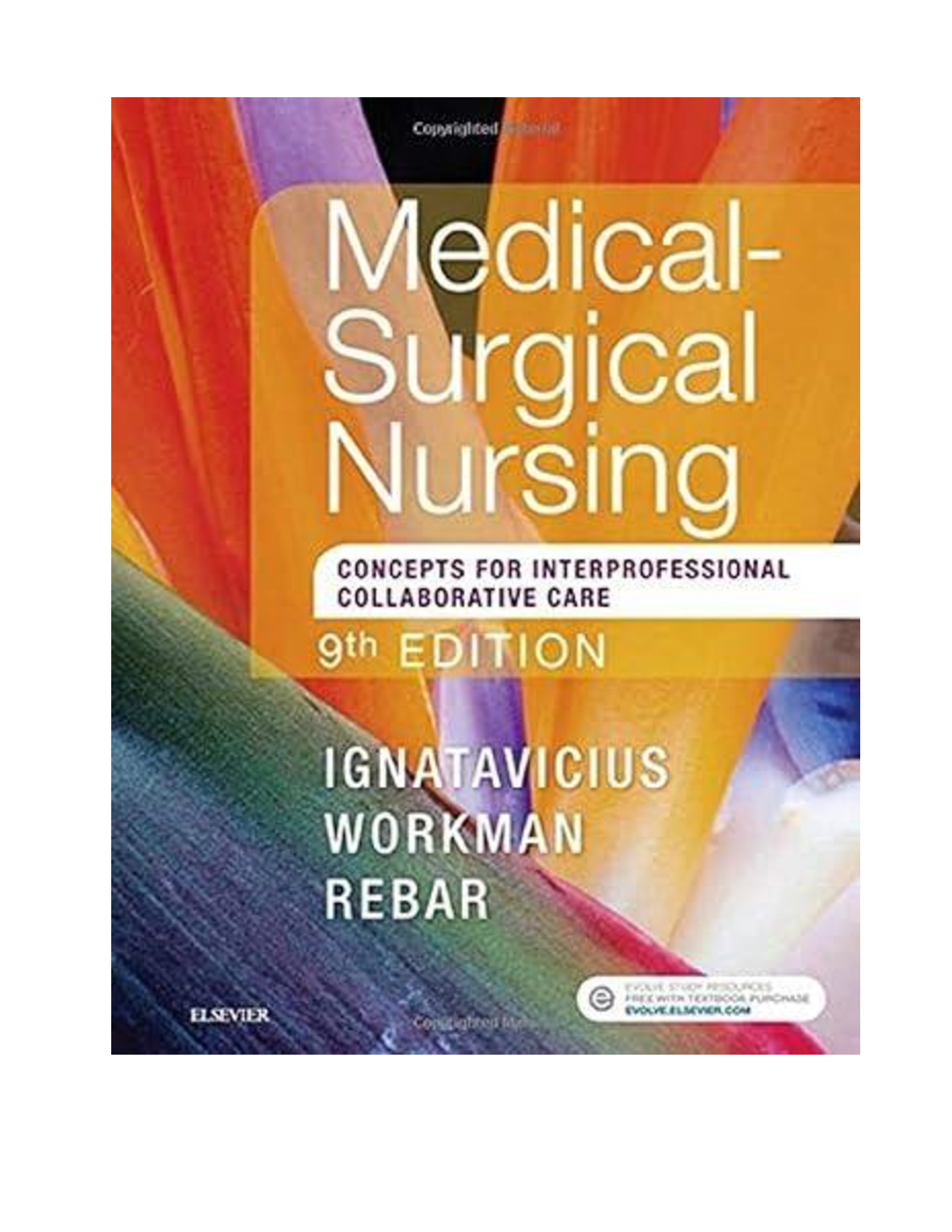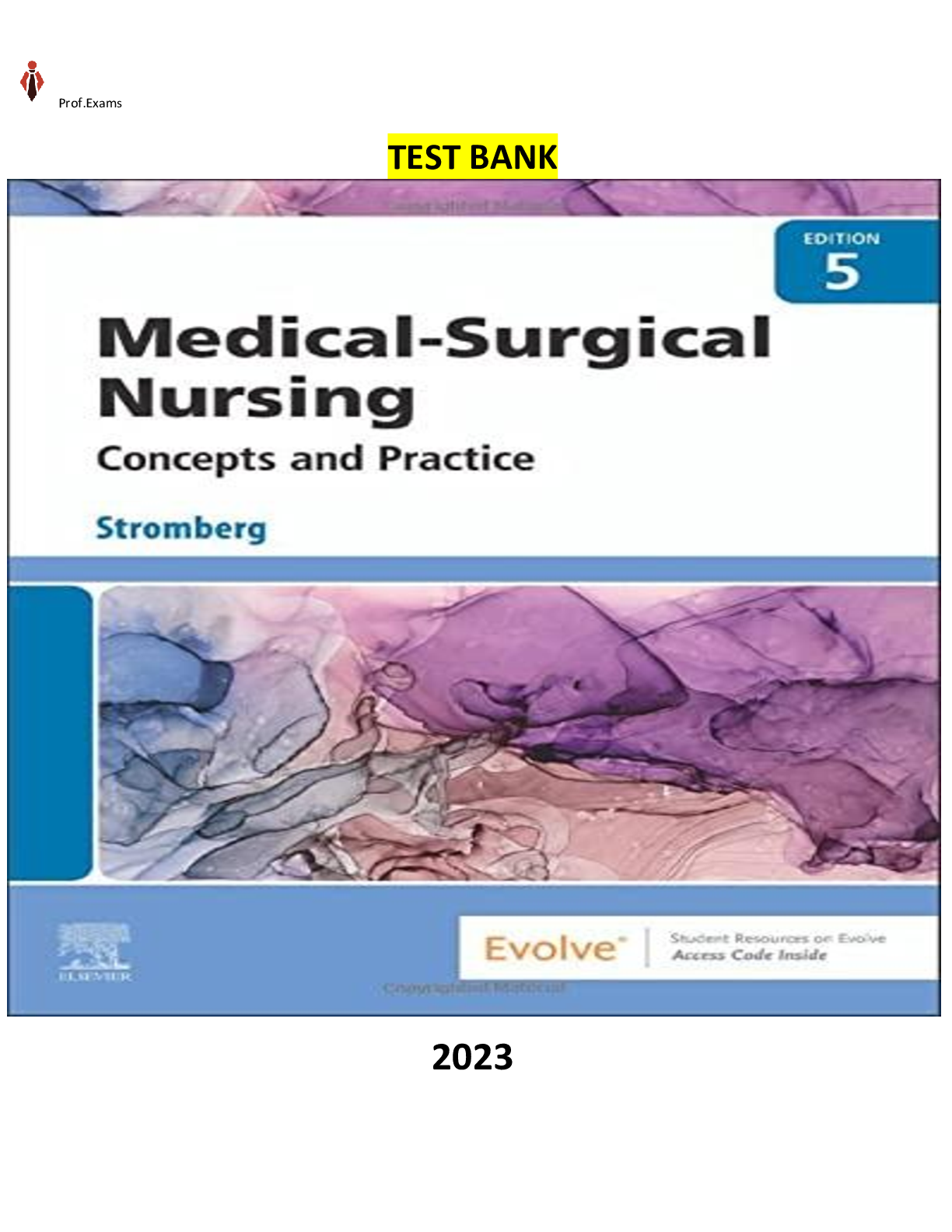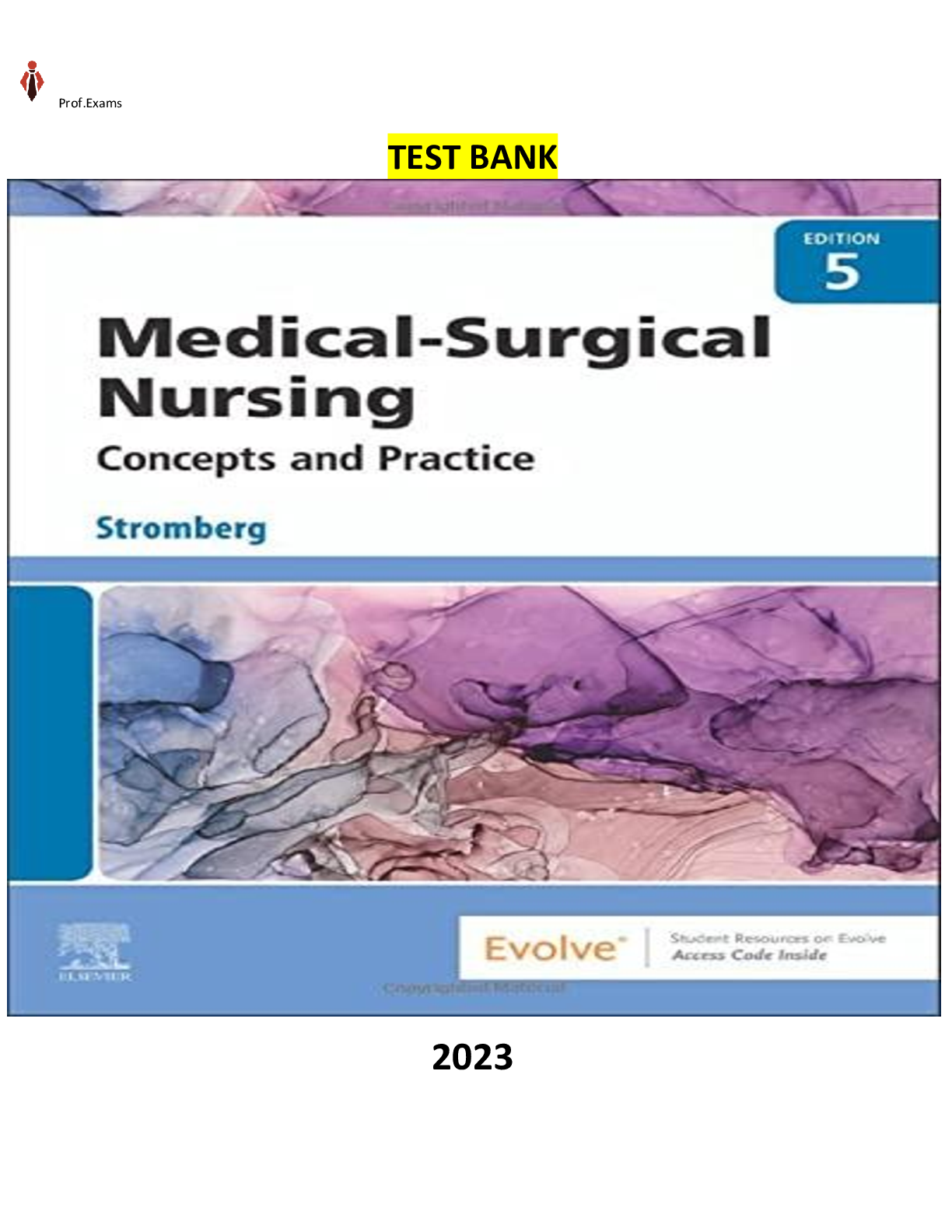Health Care > TEST BANK > Test Bank for Medical-Surgical Nursing Critical Thinking in Client Care, 4th Edition Priscilla LeMon (All)
Test Bank for Medical-Surgical Nursing Critical Thinking in Client Care, 4th Edition Priscilla LeMon
Document Content and Description Below
Chapter 1 1. The nurse is caring for four clients on a medical–surgical unit. Which client should the nurse see initially? 1. A client admitted with hepatitis A who has had severe diarrhea for... the last 24 hours 2. A client admitted with pneumonia who is has small amounts of yellow productive sputum 3. A client admitted with fever of unknown origin (FUO) who has been without fever for the last 48 hours 4. A client admitted with a wound infection whose WBC is 8,500 mm3 Answer: 1 Rationale: The nurse must decide which client should be seen on the initial rounds of the day. The nurse must remember that the first client to be seen should be the client who needs the attention of the nurse initially. A client with hepatitis A does experience diarrhea, but diarrhea for the last 24 hours could cause the client to have a problem with dehydration and experience a state of fluid volume deficit. Cognitive Level: Application Client Needs: Safe, Effective Care Environment Nursing Process: Planning 2. The nurse is preparing to administer influenza vaccines to a mass drive-through clinic. Which statement by a client would indicate further questioning prior to giving the client the influenza vaccine? 1. “I am allergic to horse hair.” 2. “I try to get my vaccine every year.” 3. “I am not allergic to anything except eggs.” 4. “My husband had a severe allergic reaction after he received his influenza vaccine.” Answer: 3 Rationale: Influenza vaccines are recommended for person at high risk for serious sequelae of influenza. The nurse should be aware that client with a sensitivity to eggs should not receive the vaccine. Vaccines prepared from chicken or duck embryos are contraindicated in clients who are allergic to eggs. Cognitive Level: Application Client Needs: Safe, Effective Care Environment Nursing Process: Assessment 3. The nurse is caring for four clients on a medical–surgical unit. The secretary gives the nurse the morning labs. Which of the following labs would require that the nurse call the physician and inform the healthcare provider about the client’s abnormalities? 1. WBC 14,600 mm3 2. Serum protein 6.9 g/dL 3. I & D (incision and drainage) showing no growth for the last 24 hours 4. Albumin 4.2 g/dL Answer: 1 Rationale: When the nurse is caring for several clients, all of the labs should be checked frequently throughout the shift to assess for any abnormalities. The WBC in option 1 is abnormal. (Normal WBC 4,000–10,000 mm3.) All of the other lab results are within acceptable range; therefore, the results should not be called in to the physician. Cognitive Level: Application Client Needs: Physiologic Integrity Nursing Process: Assessment 4. The nurse is orienting a new graduate. The nurse is reinforcing the importance of standard precautions. Which of the following observations by the nurse would require further education regarding standard precautions? 1. The graduate nurse understands to wash hands when entering and exiting the client’s room. 2. The graduate nurse wears gloves when serving breakfast trays to various clients. 3. The graduate nurse wears a gown, gloves, and goggles when suctioning a client. 4. The graduate nurse leaves all supplies in the room of a client who is in contact isolation. Answer: 2 Rationale: The nurse must have an understanding of standard precautions. Prevention is the most important measure to prevent nosocomial infections. Standard precautions were published in 1996 that provide guidelines for the handling of blood and other body fluids. These guidelines are used with all clients, regardless of whether they have a known infectious disease. Standard precautions are used by all healthcare workers who have direct contact with clients or with their body fluids. It is not necessary for the nurse to wear gloves while delivering food trays to the client, because there is not contact with the client. Cognitive Level: Application Client Needs: Safe, Effective Care Environment Nursing Process: Evaluation 5. The admitting department alerts the nurse on a medical–surgical unit that a client with active tuberculosis (TB) is being admitted to the unit. Which type of isolation is appropriate based on the client’s diagnosis? 1. Standard precautions 2. Airborne precautions 3. Droplet precautions 4. Contact precautions Answer: 2 In addition to handwashing and standard precautions, the nature and spread of some infectious diseases require that special techniques be used to protect uninfected clients and workers. The client with pulmonary tuberculosis will be placed in airborne precautions. The client should be placed in a private room with special ventilation that does not allow air to circulate to general hospital ventilation; a mask or special filter respirators will be used for everyone entering the room. Cognitive Level: Application Client Needs: Safe, Effective Care Environment Nursing Process: Assessment 6. A client is receiving IV vancomycin for the treatment of Clostridium difficile. The nurse understands that the client who develops flushing, tachycardia, and hypotension during the infusion of vancomycin indicates: 1. Ototoxicity effect. 2. Superinfection. 3. Red man syndrome. 4. Hives. Answer: 3 Rationale: Vancomycin inhibits cell wall synthesis, and is used for serious infections. It is only effective against gram-positive bacteria, especially Staphylococcus aureus and Staphylococcus epidermidis. The nurse should infuse this medication slowly over 60 minutes or more to avoid “red man” syndrome. The syndrome is characterized by erythematous rash, flushing, tachycardia, and hypotension. Clients can become dizzy and agitated. Cognitive Level: Application Client Needs: Physiological Integrity Nursing Process: Evaluation 7. The physician has ordered for the client to receive a trough blood level to evaluate the therapeutic effect of an antibiotic. The nurse understands that the trough should be ordered: 1. A few minutes before the next scheduled dose of medication. 2. 1–2 hours after the oral administration of the medication. 3. 30 minutes after the IV administration. 4. During the infusion of the antibiotic. Answer: 1 Rationale: Antibiotic peak and trough levels monitor therapeutic blood levels of the prescribed medication. The therapeutic range—the minimum and maximum blood levels at which the drug is effective—is known for a given drug. By measuring blood levels at the predicted peak (1–2 hours after oral administration, 1 hour after intramuscular administration, and 30 minutes after IV administration) and trough (usually a few minutes before the next scheduled dose), it is also possible to determine whether the drug is reaching a toxic or harmful level during therapy, increasing the likelihood of adverse effects. Cognitive Level: Application Client Needs: Safe, Effective Care Environment Nursing Process: Assessment 8. The nurse needs to change a dressing on the client’s abdomen. Which of the following techniques should be implemented? 1. Contact precautions 2. Standard precautions 3. Droplet precautions 4. Airborne precautions Answer: 2 Rationale: Standard precautions are used on all clients, regardless of whether they have a know infectious disease. Standard precautions are used by all healthcare workers who have direct contact with clients or with their body fluids. Since the client has an abdominal dressing, the nurse will use standard precautions. Cognitive Level: Application Client Needs: Safe, Effective Care Environment Nursing Process: Planning 9. The physician has ordered for the nurse to obtain a sputum specimen. The nurse understands that the sputum specimen should be collected: 1. Immediately after the first dose of antibiotic is administered. 2. 30 minutes after the first dose of antibiotics is administered. 3. During the first dose of antibiotics. 4. Before the first dose of antibiotics is administered. Answer: 4 Rationale: When the physician orders a specimen to be collected, the nurse should collect the specimen before the first dose of antibiotics is administered, to ensure adequate organisms for culture. Cognitive Level: Comprehension Client Needs: Safe, Effective Care Environment Nursing Process: Planning 10. Which of the following manifestations indicates a systemic reaction associated with an inflammatory response? 1. Erythema 2. Pain 3. Tachypnea (RR 26) 4. Edema Answer: 3 Rationale: If the nurse observes a systemic reaction, the client will exhibit manifestations including temperature, increased pulse, tachypnea, and leukocytosis. Erythema, warmth, pain, edema, and functional impairment indicate a local reaction. Cognitive Level: Application Client Needs: Physiological Integrity Nursing Process: Assessment 11. A client develops hyperthermia related to a diagnosis of Pneumonia. Which of the following nursing interventions would be effective in the treatment of hyperthermia? Select all that apply. 1. Increase the temperature of the room environment to prevent shivering. 2. Use ice packs and a tepid bath as needed. 3. Administer antipyretic medications per physician’s orders. 4. Promote frequent rest periods to increase energy reserve. 5. Restrict fluids during periods of hyperthermia because of the risk of electrolyte imbalance. Answer: 2; 3; 4 Rationale: Hyperthemia is an expected consequence of the infectious disease process. Fever can produce mild, short-term effects or, when prolonged, can cause life- threatening effects. The nurse should administer antipyretic medications as indicated for elevated temperatures. The nurse should use ice packs, cool/tepid baths, or hypothermia blanket with caution. The nurse should enforce frequent rest periods because rest increases energy reserve, which is depleted by an increased metabolic, heart, and respiratory rate. The nurse should encourage fluids rather than restrict fluids because of the risk of electrolyte imbalance. Cognitive Level: Assessment Client Needs: Physiological Integrity Nursing Process: Implementation 12. The nurse is assessing a client’s wound for signs and symptoms of inflammation. Which of the following would alert the nurse that the client is exhibiting signs of inflammation? Select all that apply. 1. Leg edema 2. Leg cool to touch 3. Severe pain from swelling 4. Decreased peripheral pulses 5. Severe erythema of leg Answer: 1; 3; 5 Rationale: Regardless of the cause, location, or extent of the injury, the acute inflammatory response follows the sequence of vascular response, cellular and phagocytic response, and healing. Many manifestations of inflammation are produced by inflammatory mediators such as histamines and prostaglandins released when tissue is damaged. The cardinal signs of inflammation include erythema, local heat caused by the increased blood flow to the injured area (hyperemia), swelling due to accumulated fluid at site, pain from tissue swelling and chemical irritation of nerve endings, and loss of function caused by the swelling and pain. Cognitive Level: Application Client Needs: Physiological Integrity Nursing Process: Assessment Alternate item format – Select all that apply Which of the following manifestations would the nurse expect to see with a client who has had previous knee surgery who suffered a surgical infection with signs of systemic manifestations? Select all that apply. 1. Erythema 2. WBC 14,200 mm3 3. Pain at the surgical site 4. 10% Bands 5. Respiratory rate of 16 6. Pulse 114 Answer: 2; 3; 6 Rationale: The client is post–surgical repair of the knee. The nurse should be able to distinguish between local reactions and system reactions. An elevated WBC and 10% bands are indicative of an infection. Vital sign changes typically associated with an infection include an elevation in temperature and tachycardia. Local manifestations include erythema, warmth, pain, edema, and functional impairment, whereas systemic manifestations include elevated temperature above 100.4°F, pulse greater than 90/min., respiratory rate greater than 20, and WBC greater than 12,000 mm3 or > 10% bands. Cognitive Level: Application Client Needs: Physiological Integrity Nursing Process: Assessment Chapter 2 1. When collecting data at the immunization clinic, which of the following disclosures by the client would cause the nurse to hold administration of the varicella vaccine? a. History of an allergic reaction to yeast bread b. Itching and swelling on the face and hands after ingesting eggs c. A low grade temperature within the past two days d. A blood transfusion after undergoing surgery three months ago Answer: d Rationale: Contradictions for the varicella vaccine include pregnancy, suppressed immunity, and a recent history of a blood transfusion. Recent hyperthermia and allergies to yeast or eggs do not indicate a potential difficulty with the administration of the varicella vaccine. Nursing Process Step: Assessment Client Needs Category: Health Promotion and Maintenance Client Needs Subcategory: Prevention and/or Early Detection of Health Problems Cognitive Level: Analysis 2. The nurse is planning an in-service to discuss primary levels of disease prevention. Which of the following topics should be included in this presentation? a. A discussion concerning the use of available community rehabilitation facilities b. Available locations for diabetes screening c. The need for annual colonoscopy examinations d. The elimination of smoking and alcohol use Answer: d Rationale: Primary prevention involves activities geared toward the prevention of illness and disease. Screening activities such as glucose testing and colonoscopy examinations are a form of secondary prevention. Rehabilitation activities are considered a tertiary level of prevention. Nursing Process Step: Planning Client Needs Category: Health Promotion and Maintenance Client Needs Category: Prevention and/or Early Detection of Health Problems Cognitive Level: Application 3. A 45-year-old client voices concerns about gaining 12 pounds over the past two years. The client reports no change in dietary habits. Which response by the nurse is most appropriate? a. “Age-related changes in metabolism can result in weight gain despite consistent dietary intake.” b. “Are you exercising?” c. “You might be eating more than you think.” d. “You are getting older.” Answer: a Rationale: A reduction in metabolic rate often accompanies aging. This will cause weight gain despite not eating more calories. Asking the client about exercise fails to provide the needed information to the client. It also assumes the client is sedentary. Implying the client is overeating is judgmental, and will do little to establish a therapeutic rapport. The client is aware of aging. Pointing this out does little to meet the client’s obvious interest in more information. Nursing Process Step: Diagnosis Client Needs Category: Physiological Integrity Client Needs Category: Physiological Adaptation Cognitive Level: Application 4. The nurse is assisting an 18-year-old female client to plan a healthy diet to support recent weight loss. Which of the following should be included in the dietary plan? Select all that apply. a. 200 mg folic acid are recommend in the daily diet. b. Eat at least six servings of grains. c. To avoid constipation, keep daily iron intake below 21 mg. d. Fat intake should be limited to less than 30% of the daily caloric intake. Answer: b; d Rationale: Grain intake should include at least six servings daily. To maintain a healthy weight and reduce incidence of cardiovascular disease, fat intake should not exceed 30% of the daily intake. Folic acid intake should be at 400 mg daily. Iron is a vital ingredient in the daily diet. 18 mg daily is reflective of the desired amount. Constipation should be managed by an adequate fluid and fiber intake. Nursing Process Step: Planning Client Needs Category: Health Promotion and Maintenance Client Needs Subcategory: Prevention and/or Detection of Early Health Problems Cognitive Level: Application 5. During a routine physical examination for a 52-year-old Caucasian male, the client declines to have his prostate gland exam [Show More]
Last updated: 1 year ago
Preview 1 out of 284 pages
.png)
Reviews( 0 )
Document information
Connected school, study & course
About the document
Uploaded On
Sep 16, 2022
Number of pages
284
Written in
Additional information
This document has been written for:
Uploaded
Sep 16, 2022
Downloads
0
Views
30




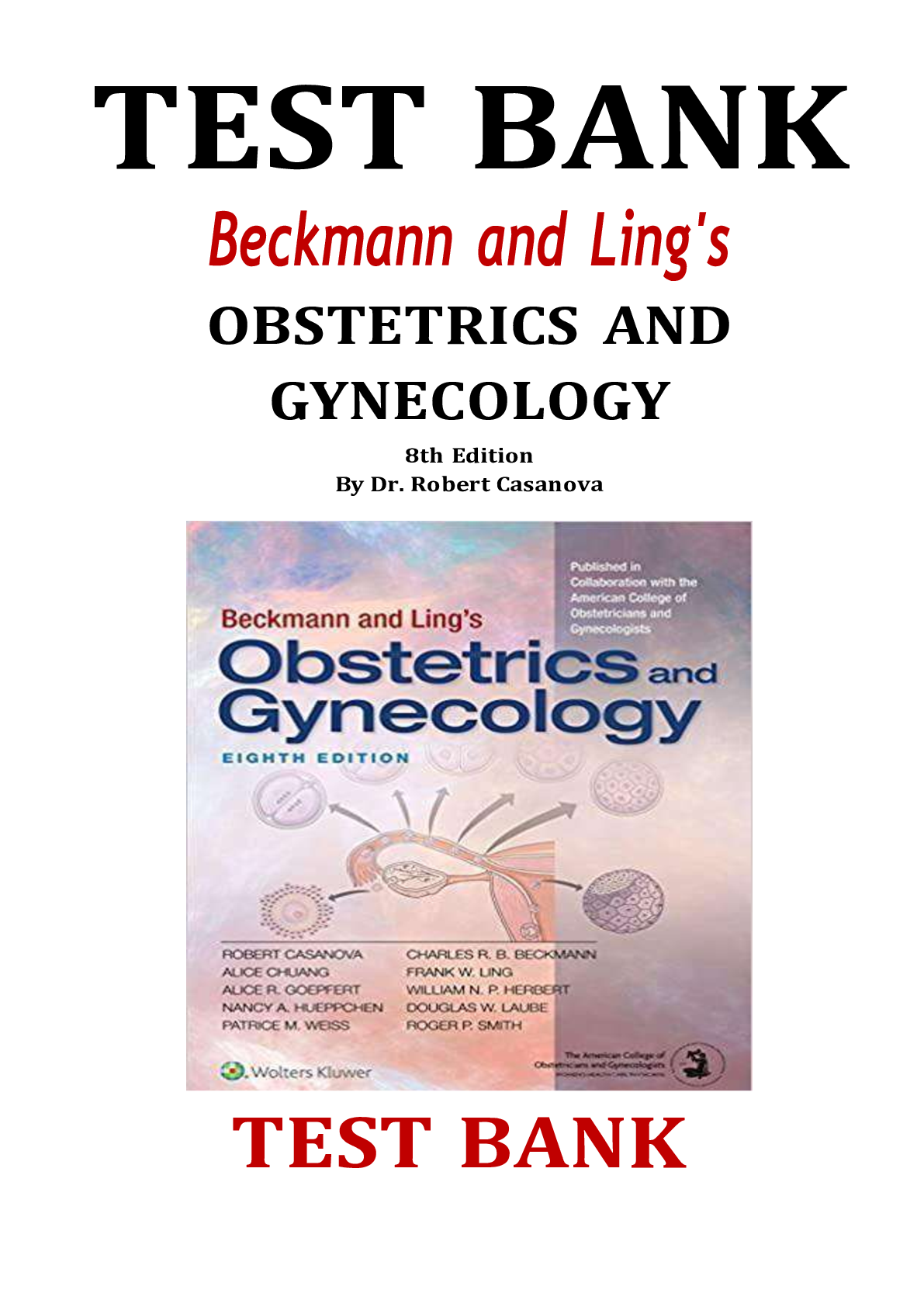



.png)



